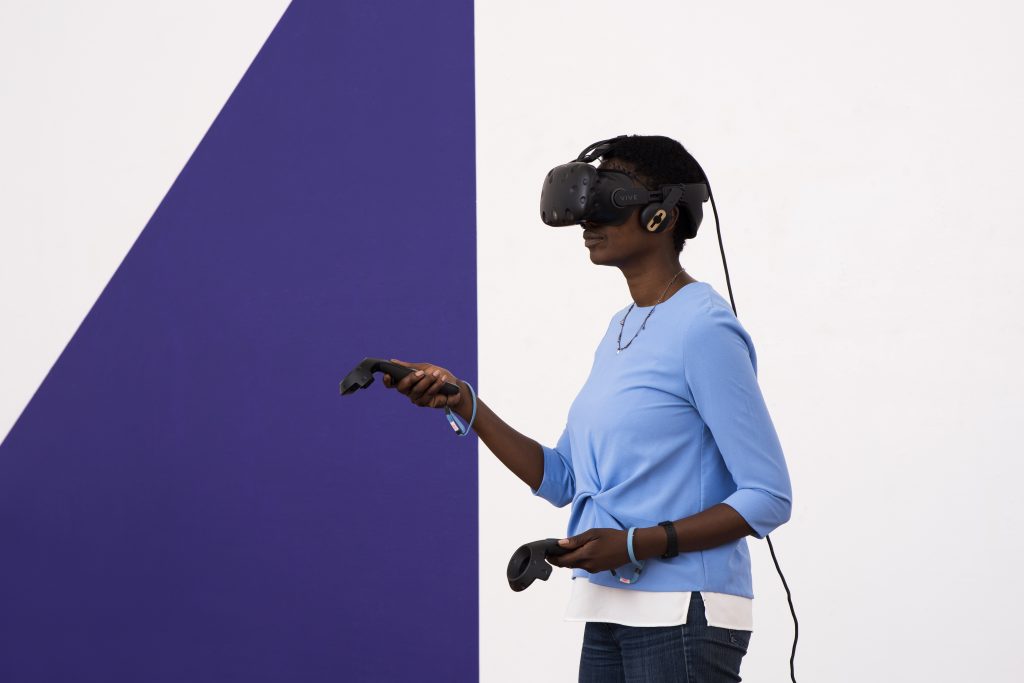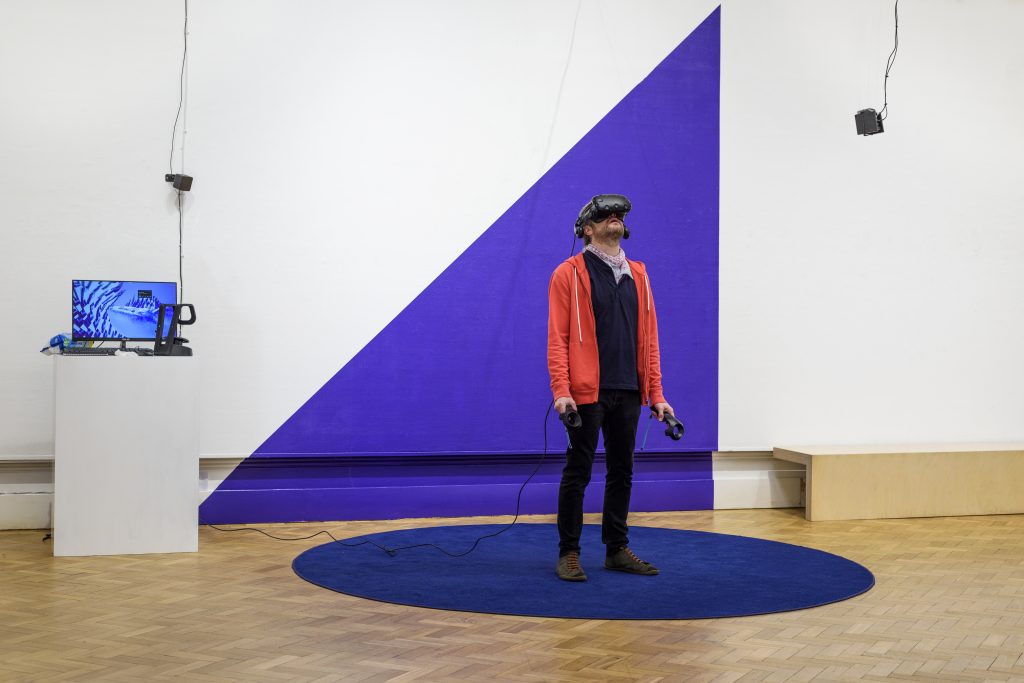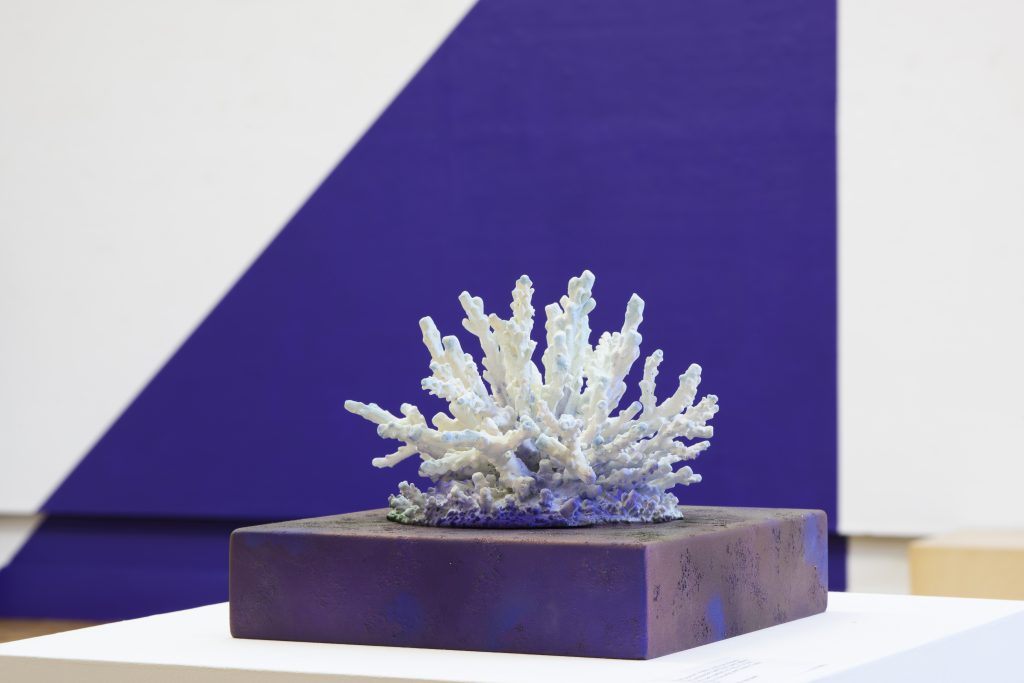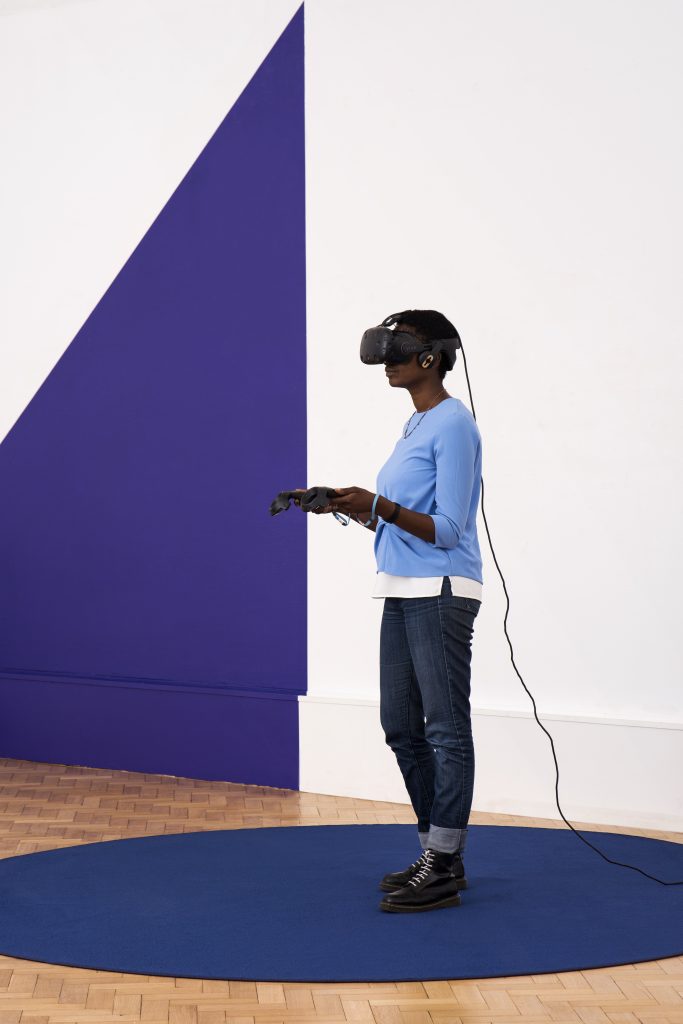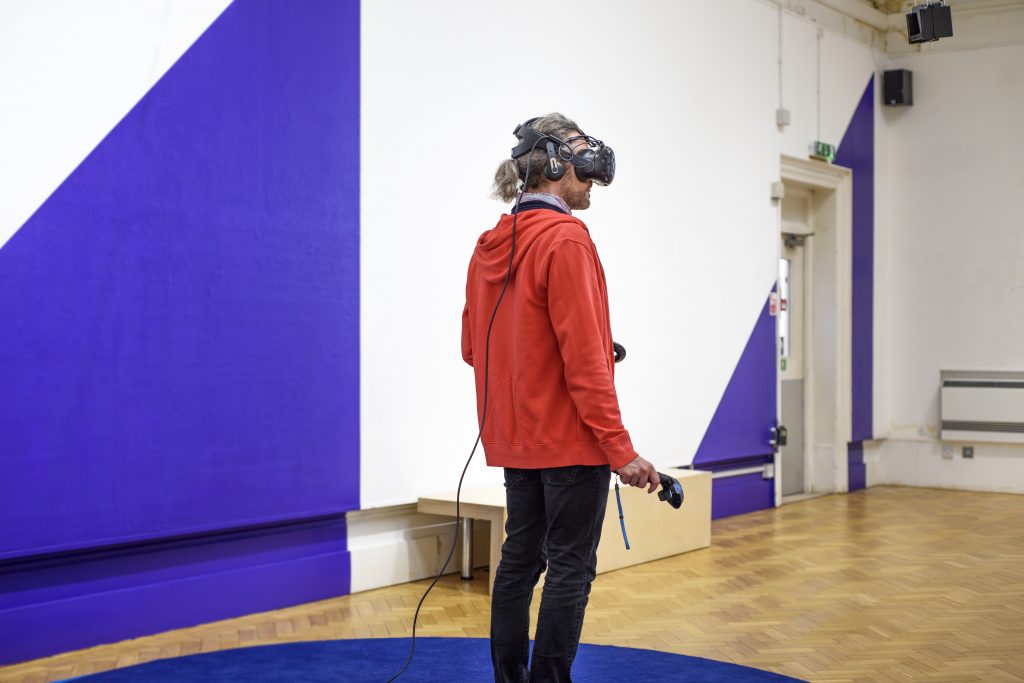EXHIBITION
The Terrarium situates audiences 300 years in the future, where the surface of Planet Earth is 90% water. Having gone through a series of complex genetic splicing programmes, the viewer is now modified into a sophisticated cephalopod hybrid and released from an experimental laboratory facility into the open seas to explore their surroundings. Incorporating site-responsive references to both the Kent and Estonian coastlines, this immersive experience blends scientific prediction and science fiction to highlight the implications of climate change for our marine ecosystems, and the consequences of rising sea levels for all forms of life.
For Creative Folkestone, The Terrarium was presented as part of an immersive installation of the same name at the Sassoon Gallery, Folkestone’s Central Library. The VR was accompanied by a new wall painting that references the sound mirrors that punctuate the Kent landscape and signal a motif of listening: audiences are sonically immersed in Shifter: The Terrarium Triad, a new musical score by British composer Graham Fitkin. Fitkin used aquatic environmental recordings alongside guitars, harps and moog synthesisers to explore the “shifting baseline syndrome”. This theory suggests each generation makes an unconscious shift in expectation of what a healthy ecosystem looks like and explores our difficulty in perceiving how ecological, cultural, or behavioural norms change over time. The score merged environmental sounds and more conventional musical instruments, alongside an interview with marine biologist, Professor Daniel Pauly from Vancouver University, who has explored the concept of shifting baselines.
The exhibition also featured Hybrid I, a sculpture that emerged from Dawood’s ongoing correspondence with ecological geneticist and coral specialist Professor Madeleine van Oppen. Based at the Australian Institute of Marine Science (AIMS), Professor van Oppen has been pioneering coral hybridisation in order to develop more resilient coral species that can withstand rising temperatures and ocean acidity – the main causes for the bleaching that has devastated coral reefs across the world. The sculpture reproduces the tenuis loripes hybridised species and glows in the dark, at once reflecting the UV conditions of Professor van Oppen’s lab and mimicking coral reef phosphorescence in the ocean.
The Terrarium was complemented by AnthropoPangaea, an interactive map presenting a version of the earth that refuses a colonial logic, while merging science with fiction to bring audiences of all ages closer to some of the planet’s strangest inhabitants. AnthropoPangaea is commissioned as part of UP Projets’ digital commissioning programme, This is Public Space. The interactive map is still accessible via the UP Projects website.
The Terrarium is curated and commissioned by UP Projects for Creative Folkestone Triennial 2021 and Kai Art Center and is supported by CUPIDO, a project co-funded by the European Union, Arts Council England and Tallinn Culture Department. VR, duration variable, (featuring parts of Anthropocene Island TAB17 by ecoLogicStudio and excerpts from The Terrarium Inventory by Graham Fitkin). Courtesy of UBIK Productions.
Shezad Dawood The Terrarium, 2020, VR, duration variable.
